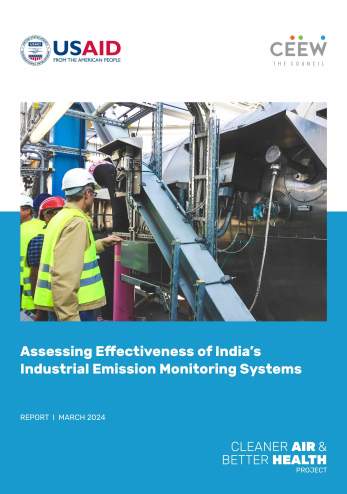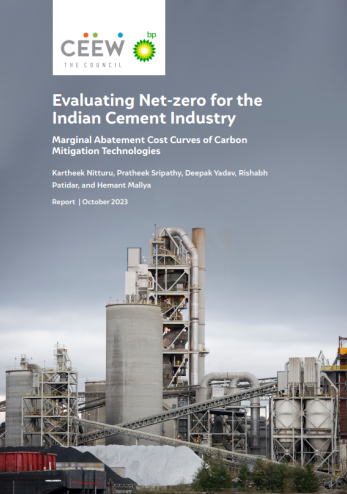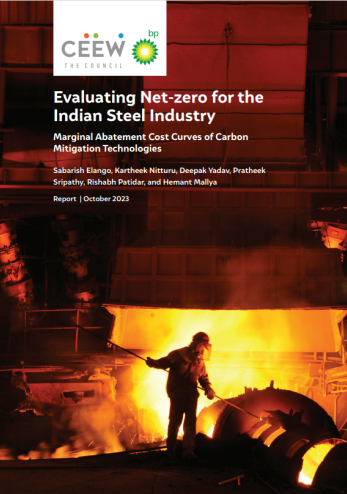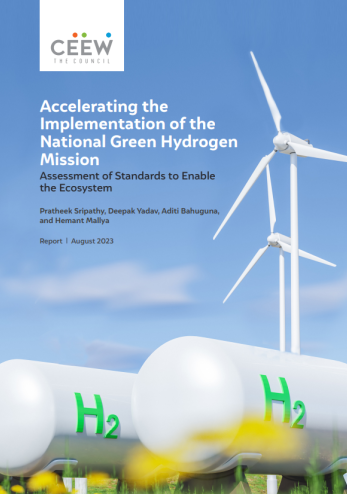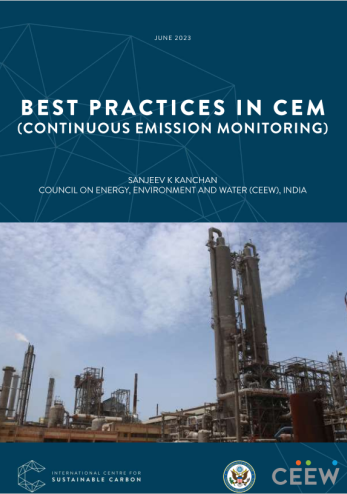Report
Greenhouse Gases Emission Estimates from the Manufacturing Industries in India National Level Estimates: 2005 to 2013
Vaibhav Gupta, Tirtha Biswas, Karthik Ganesan
September 2017 | Industrial Sustainability
Citation: Gupta, V., Biswas, T., & Ganesan, K. (2017). Industrial Emissions (Ver 2.0). Retrieved from GHG Platform - Council on Energy, Environment and Water.
Overview
This study provides an in-depth assessment of greenhouse gas (GHG) emissions from the manufacturing sector (including construction) in India from 2005 to 2013. Part of The Council’s work as a member of the GHG Platform India, this report is a revised and updated version of previous estimates. It was published simultaneously with an a state-level emissions estimate report.
This study covers three key greenhouse gases, namely - carbon dioxide (CO2), methane (CH4), and nitrous oxide (N2O), which account for a large share of anthropogenic emissions from India. Over the past few years, GHG emissions from the manufacturing activities in India have increased at a rapid rate of 8 per cent (CAGR); rising from ~315 Million Tonnes (MMT) of carbon dioxide equivalent (CO2e) in 2005, to ~623 MMT in 2013. This includes combined emissions from energy use, as well as industrial process and product use (IPPU).
The Council has followed a bottom-up approach, making use of secondary datasets predominantly obtained from the Ministry of Statistics and Programme Implementation (MOSPI). This report also gives an overview of the methodology behind the numbers presented.
Year on year growth of CO2e emissions and dominant sectors
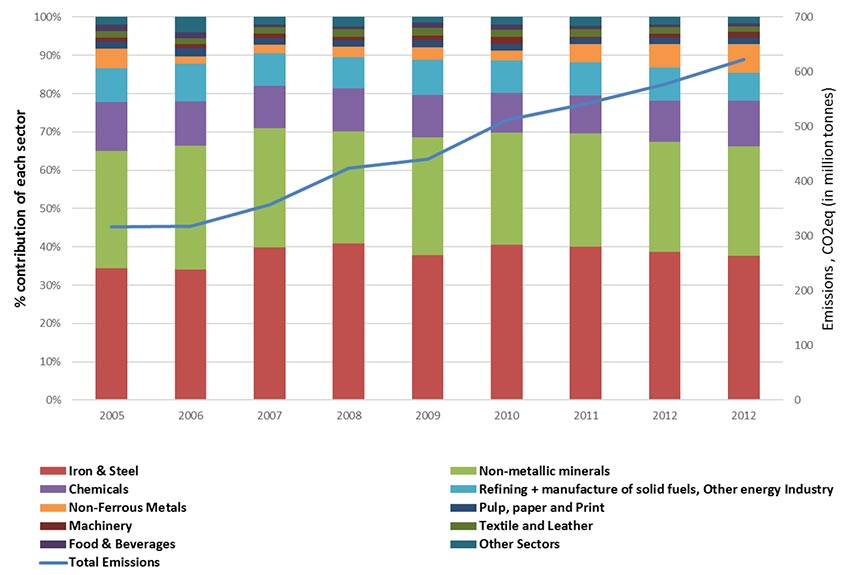
Source: CEEW analysis, 2017
Key Findings
- Between 2005 and 2013, the overall GHG emissions from the manufacturing industry almost doubled from 315 MMT to 623 MMT
- Manufacturing (and processing) of iron and steel, and non-metallic minerals (primarily cement) have remained the major contributors to GHG emissions. Together, they represent 38 per cent and 29 per cent of emissions respectively for 2013.
- Over the years evaluated, emissions from fuel use increasingly contributed to the overall manufacturing industries emissions. It’s share in overall emissions ranges between 65 per cent and 75 per cent during the period.
- Coal continues to be the dominant source of energy across the sectors, contributing nearly 70 per cent of the total energy use emissions. Its share in the energy derived emissions grew from 171 MMT of CO2e in 2005 to 385 MMT CO2e in 2013.
Overall CO2eq emissions due to various fuel use within the manufacturing industry
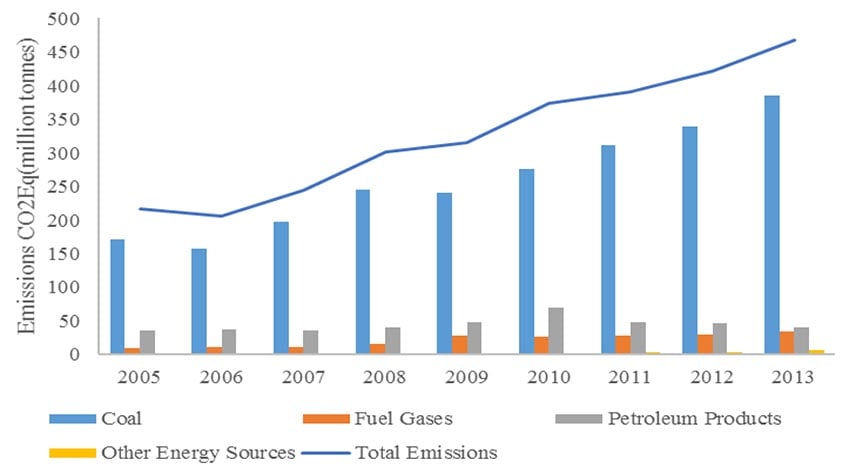
Source: CEEW analysis, 2017
- Over the period analysed, IPPU emissions contributed between 25 per cent to 35 per cent of the overall industrial emissions.
- Unlike emissions from fuel use, IPPU emissions grew at a lower annual growth rate of 6 per cent from 2005 till 2013.
- Collectively, cement production, ammonia production, and iron and steel production contributed to more than 80 per cent of emissions during the period. The cement industry itself contributed more than 50 per cent of all IPPU emissions, and ammonia production for fertiliser use contributed around 17 per cent of IPPU emissions.
CEEW is the lead partner of the GHG Platform India for the development of emissions estimates from manufacturing industries. These estimates are also compiled into an overall Trends Analysis of GHG Emissions in India, published by the GHG Platform.
Between 2005 and 2013, the overall GHG emissions from the manufacturing industry almost doubled from 315 MMT to 623 MMT.




